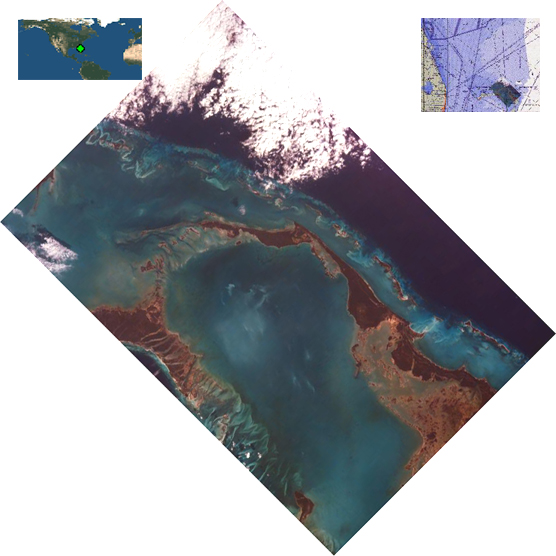Favorite Image: STS081.ESC.08052046
Atlantic Ocean and Islands
This image captures the tropical beauty of the major islands of the Little Bahama Bank, the northernmost of the island groups that comprise the Bahamas. The island at the western edge of the image is Grand Bahama Island, which lies 60 miles east of West Palm Beach in Florida and boasts the second-largest city in the Bahamas, Freeport. The island has an area of 530 square miles and a population of more than 50,000, according to the latest census by the Bahamian government. The economy is based on tourism and fishing, with a substantial amount of forest products adding to economic exports. The islands in the center and southeastern edge of the image are called Little Abaco and Great Abaco. The Abaco island group extends 780 square miles, and is the most northerly section of the Bahamas. Most of the water in this image is relatively shallow, reaching depths of no more than 200 meters (650 feet). Along the northeastern edge of the image, however, there is a visible drop-off as the depth increases to 1,000 meters (3,281 feet) in the open Atlantic Ocean.
The islands of the Bahamas rest on a foundation of ancient coral, above which is a layer of sandy soil. Toward the interior of the islands, this soil is cemented to form Bahama limestone. Because they are built up entirely by sedimentation and coral growth, the landscape is quite flat. The average elevation is about 20 feet above sea level.
The islands of the Bahamas rest on a foundation of ancient coral, above which is a layer of sandy soil. Toward the interior of the islands, this soil is cemented to form Bahama limestone. Because they are built up entirely by sedimentation and coral growth, the landscape is quite flat. The average elevation is about 20 feet above sea level.








